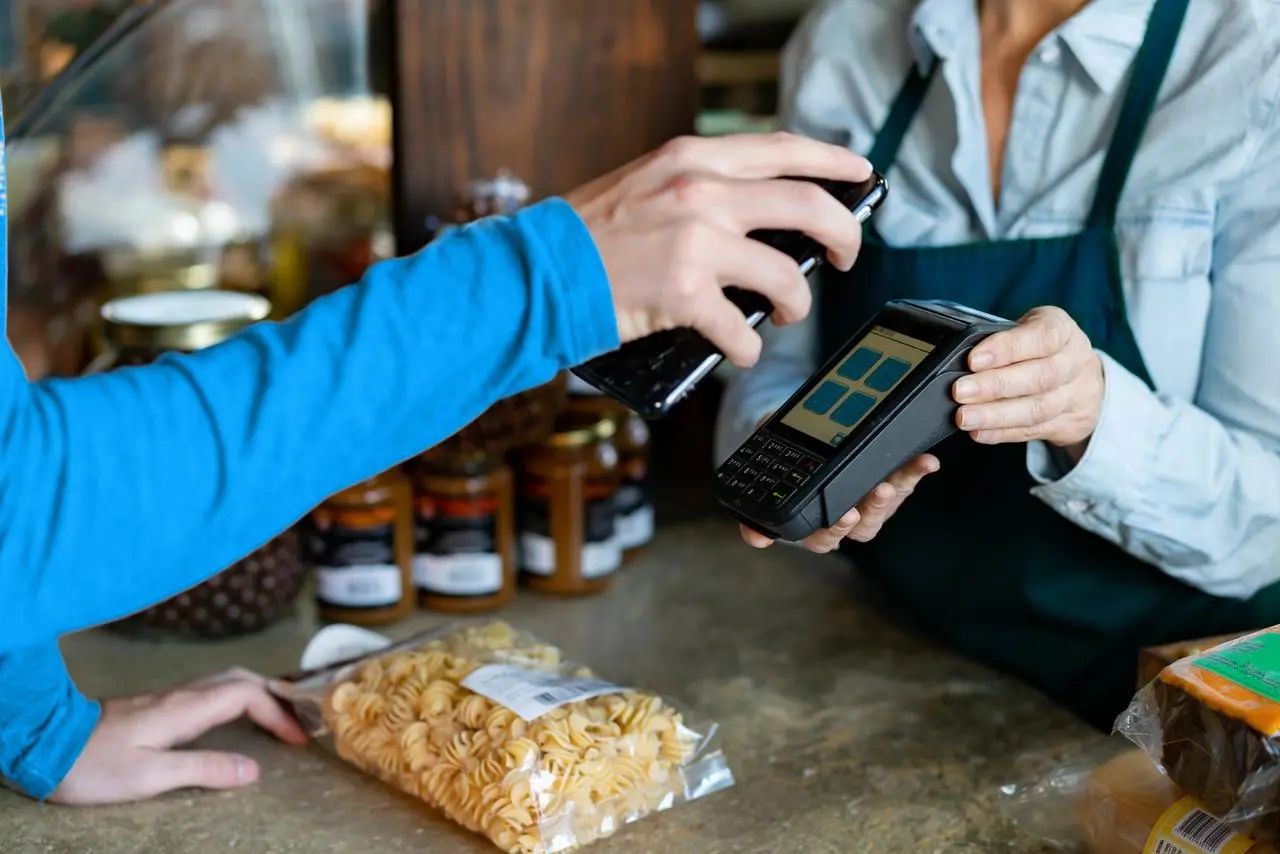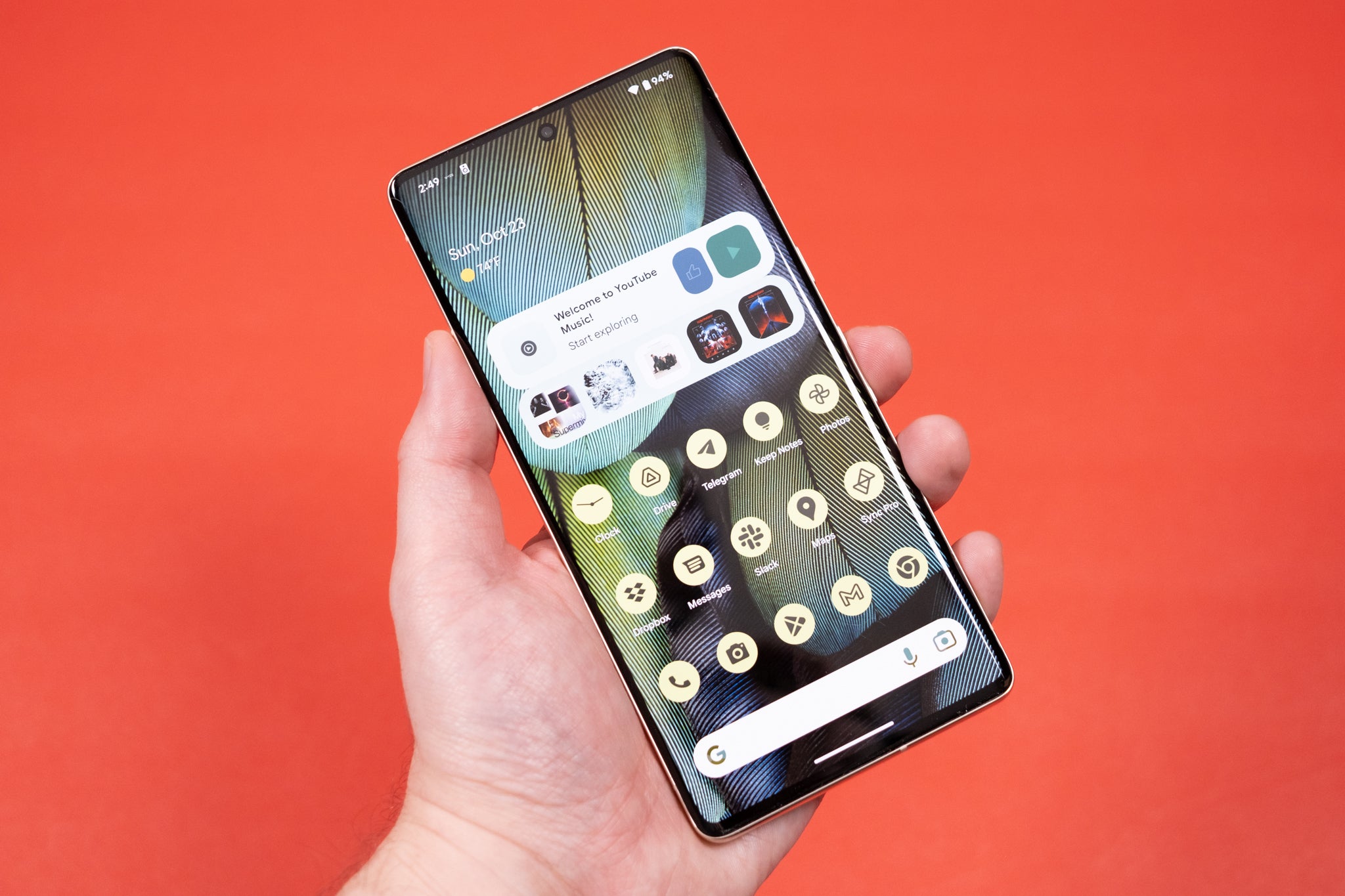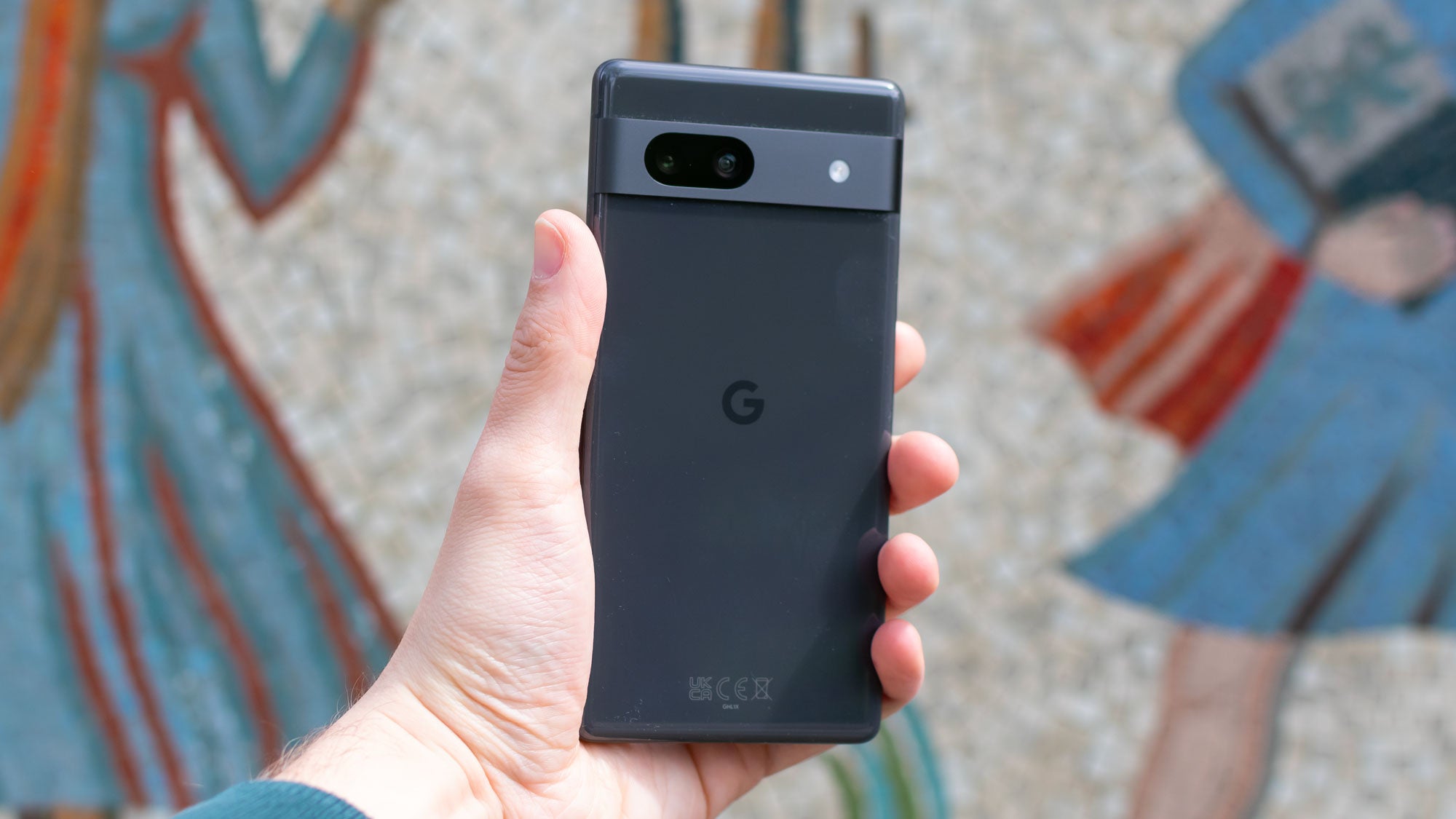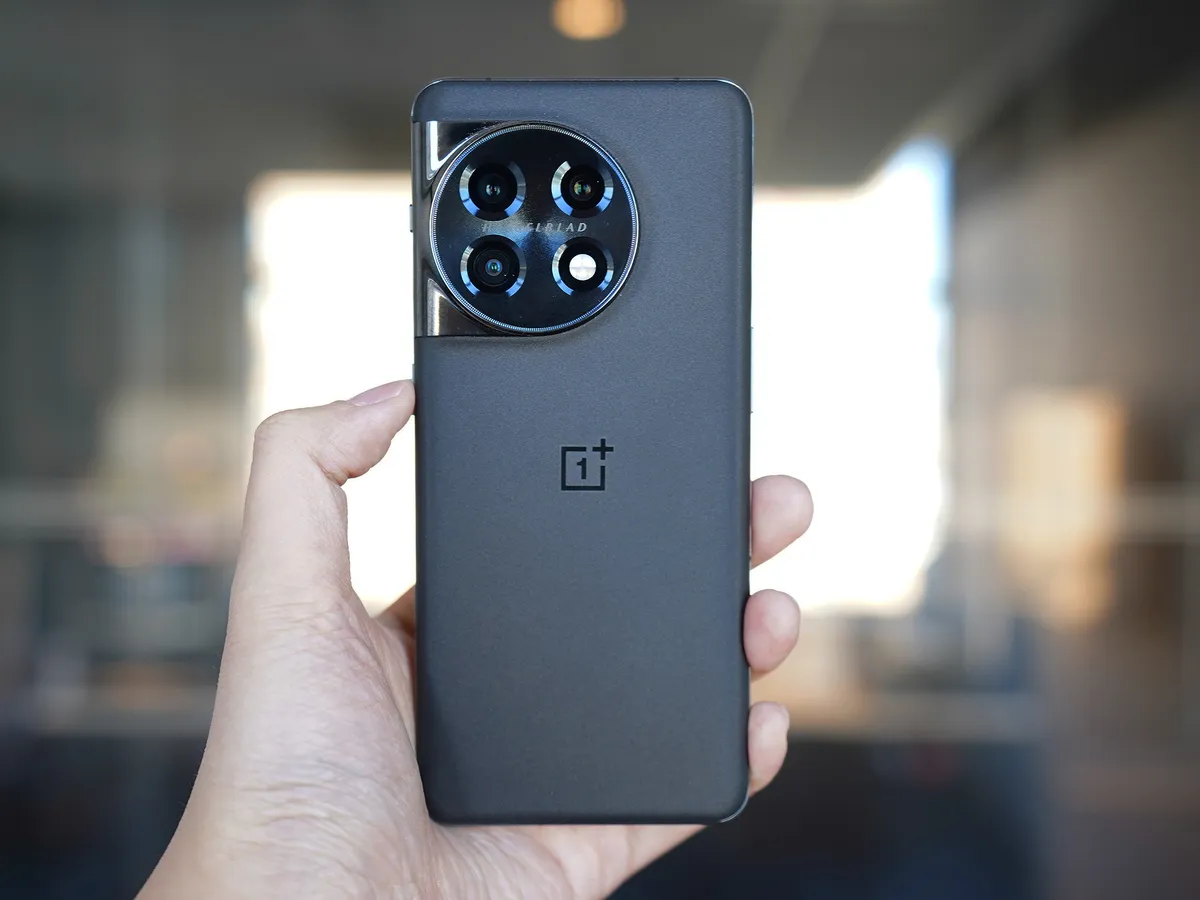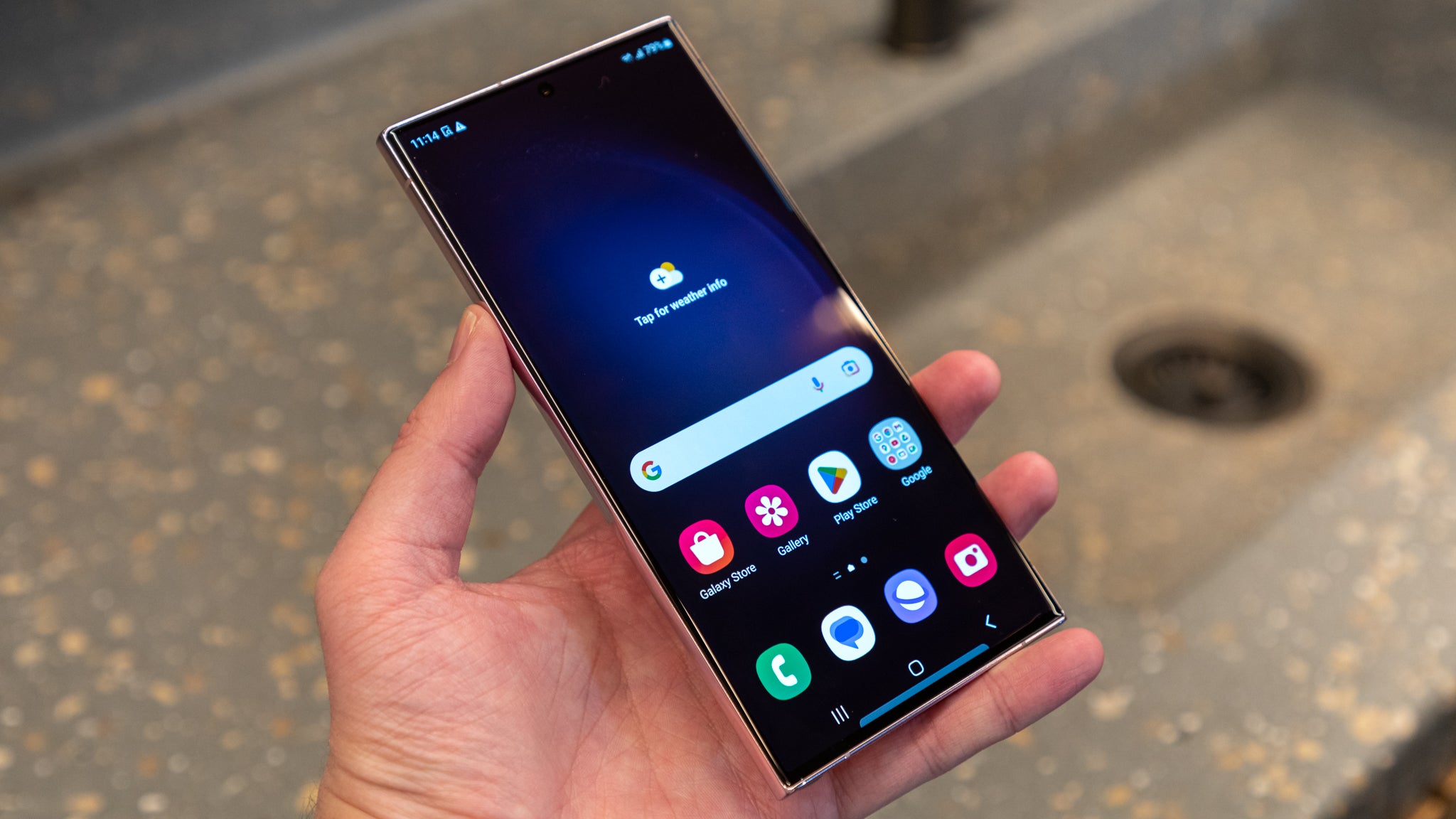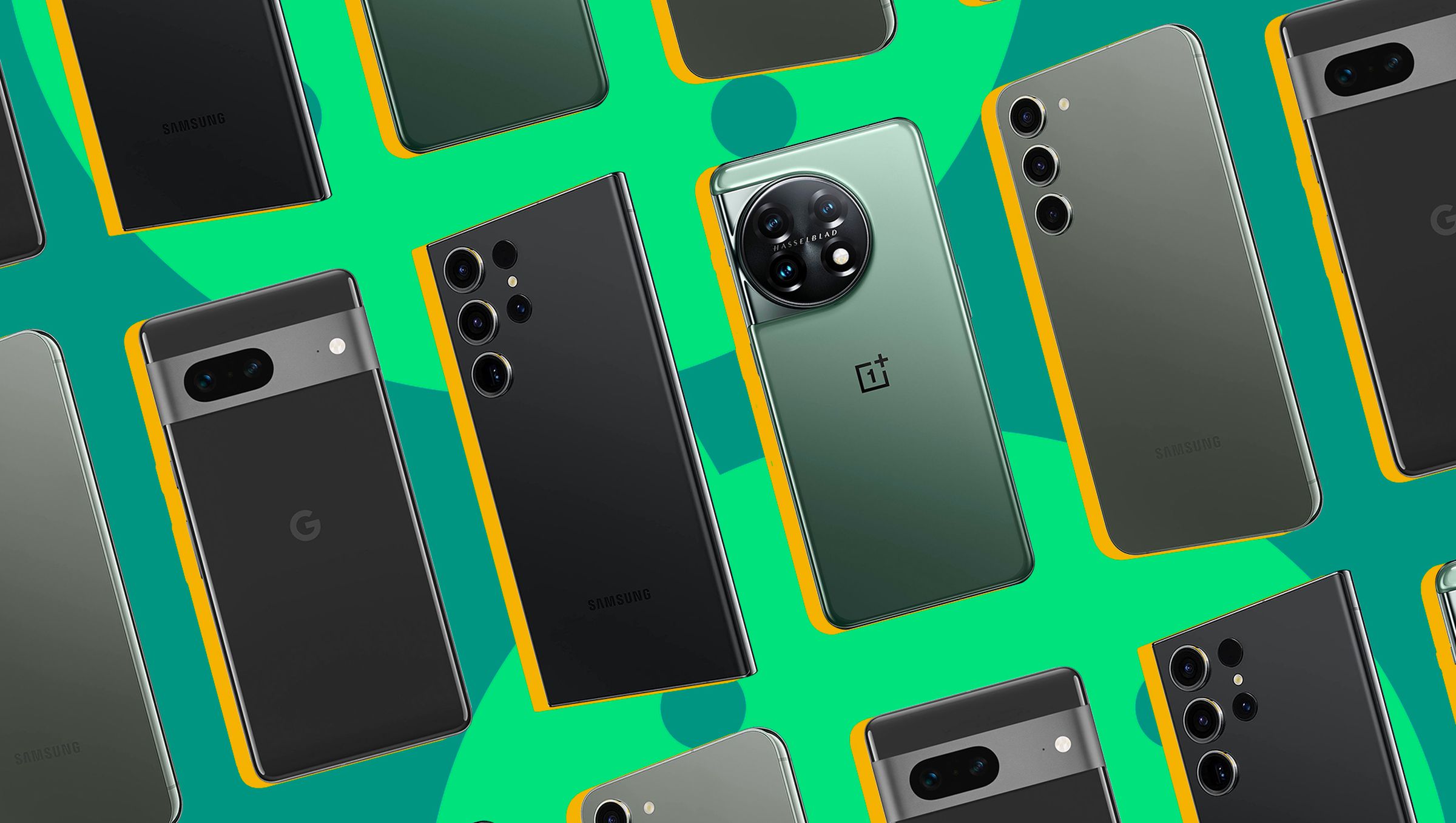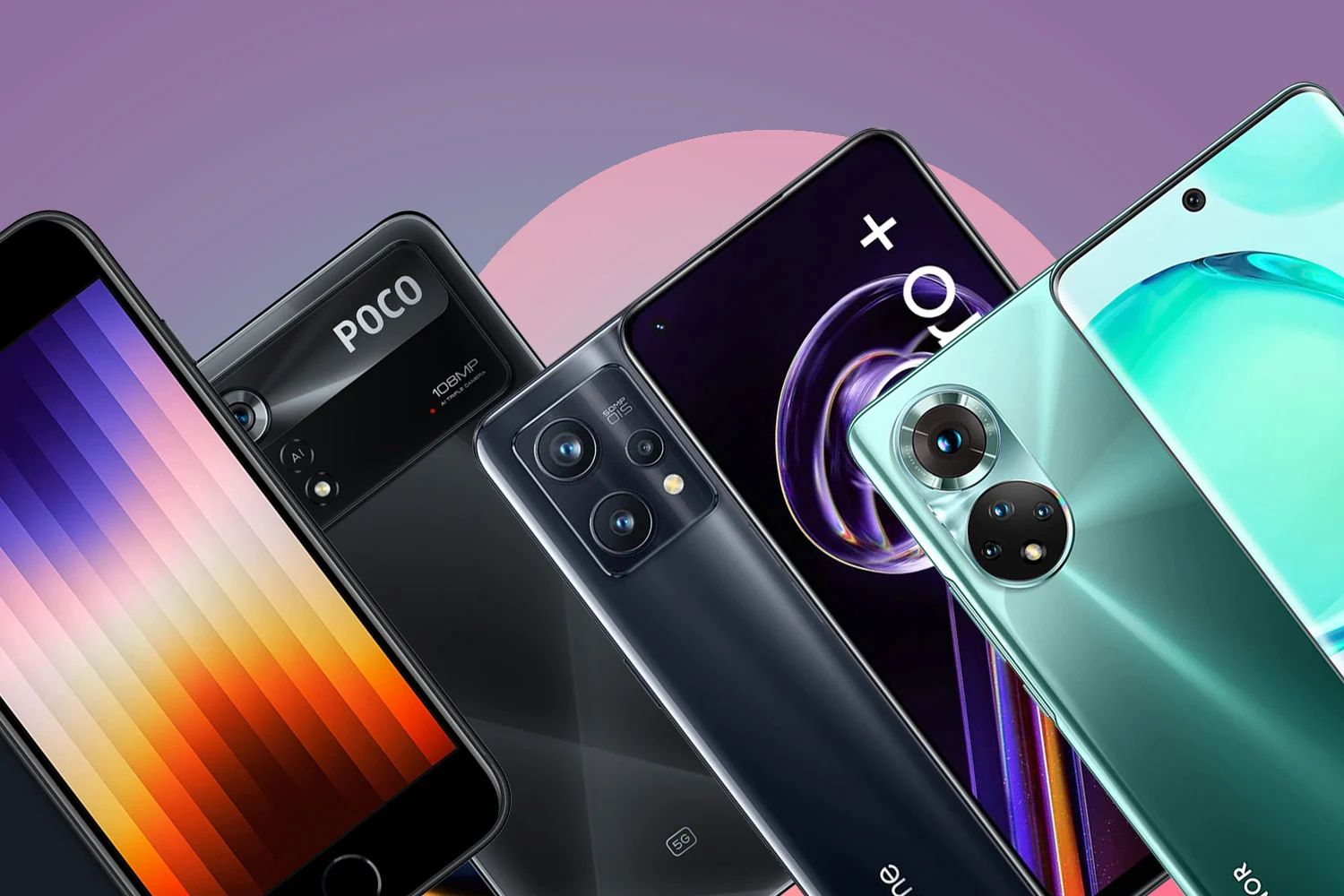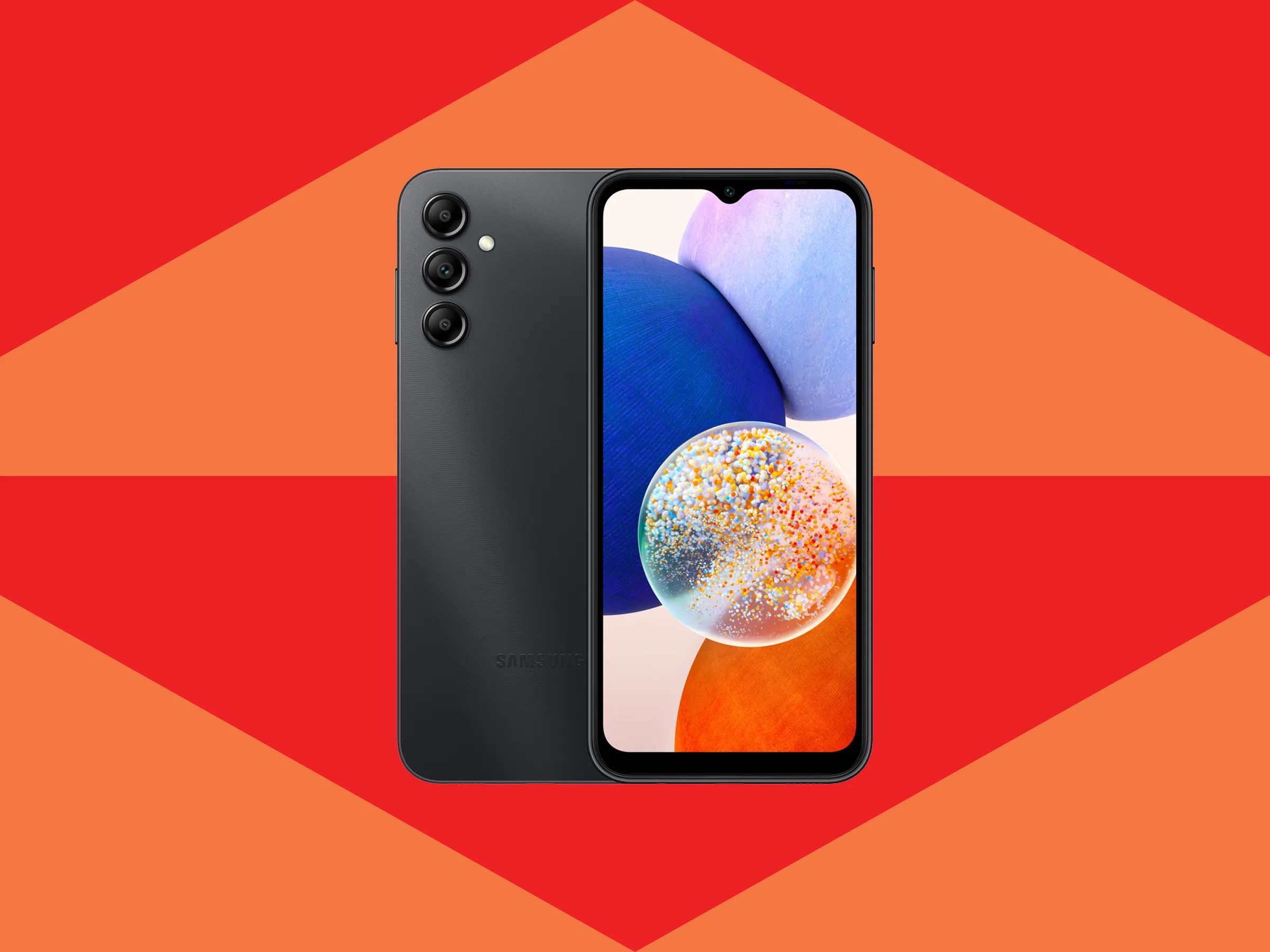Introduction
Welcome to the world of technology where smartphones continue to evolve and surprise us with their ever-expanding capabilities. One of the features that has gained significant popularity in recent years is NFC (Near Field Communication) on cell phones. NFC technology has revolutionized the way we interact and communicate with our devices, offering a wide range of functionalities that make our lives easier and more convenient.
NFC, in simple terms, is a short-range wireless communication technology that allows devices, such as smartphones, tablets, and even credit cards, to communicate with each other when placed in close proximity. It operates on the principle of electromagnetic radio fields, enabling data transfer between two devices simply by bringing them close to each other.
The implementation of NFC on cell phones has opened up a whole new world of possibilities, transforming our smartphones into digital wallets, access keys, transportation cards, and much more. With NFC-enabled phones becoming increasingly popular, understanding the basics of NFC and its functionalities is essential.
In this article, we will delve deeper into the world of NFC on cell phones, exploring how it works, its benefits, common uses, and even security concerns. So, if you’ve ever wondered about the mysterious acronym “NFC” on your cell phone, keep reading to uncover its secrets and unlock a whole new dimension of possibilities!
What is NFC?
Near Field Communication (NFC) is a short-range wireless communication technology that allows two devices to exchange data when placed in close proximity, typically within a few centimeters. It is a form of radio frequency identification (RFID) that operates on the 13.56 megahertz frequency.
The NFC technology uses electromagnetic fields to enable communication between devices by establishing a connection with the help of an NFC chip. This chip is embedded in devices like smartphones, tablets, or even credit cards, and can both send and receive data.
NFC technology is based on the principles of contactless communication, similar to the technology used in contactless payment systems like Apple Pay or Google Wallet. However, NFC goes beyond just payment transactions and offers a wide range of functionalities.
While it may seem similar to Bluetooth or Wi-Fi, NFC has distinct advantages. Firstly, NFC devices do not require pairing or any intricate setup process to transfer data, making it incredibly simple and convenient. Secondly, NFC operates at a much shorter range, which enhances security and prevents unauthorized data interception.
NFC technology has gained widespread adoption due to its versatility and ease of use. In addition to smartphones and tablets, NFC can be found in various everyday objects, such as key cards, public transportation cards, and even product tags.
With NFC-enabled devices, users can tap or wave their devices near other NFC-enabled objects to trigger specific actions or perform various tasks. These actions can range from making contactless payments and sharing files to accessing secure areas or connecting to Bluetooth devices.
Overall, NFC technology provides a seamless and efficient way to exchange information and perform tasks, making it an integral part of many modern cell phones.
How does NFC work?
Near Field Communication (NFC) technology relies on a combination of electromagnetic fields and radio frequency identification (RFID) to establish a connection and exchange data between devices. Understanding the basic principles of how NFC works can help demystify this technology.
NFC requires at least two devices: an initiator and a target. The initiator device, such as a smartphone, generates an electromagnetic field with its built-in NFC chip. When this field comes into close proximity with another NFC-enabled device, the target device picks up the signals and initiates communication.
The communication process in NFC involves modulation and demodulation of radio waves. The initiator sends a modulated electromagnetic wave, which contains the necessary information or instructions, to the target device. The target device, in turn, demodulates and interprets the received wave to understand the data being transmitted.
NFC relies on two main communication modes: active and passive. In active mode, both the initiator and target devices generate their electromagnetic fields, allowing for bidirectional communication. This mode is commonly used for applications like file sharing or device pairing.
In passive mode, only the initiator device generates the electromagnetic field, while the target device merely responds to the signals. Passive mode is often used for applications like contactless payments or access control, where one device acts as a reader or transmitter, while the other acts as a passive tag or card.
Compared to other wireless technologies like Bluetooth or Wi-Fi, NFC operates at a relatively short range, typically within a few centimeters. This close proximity requirement enhances security by reducing the chances of unintentional data transmission or interception.
Additionally, NFC supports two different data transfer modes: read/write and card emulation. In read/write mode, the initiator device can read data from and write data to another NFC-enabled device. This mode enables actions like transferring photos or contacts between phones or interacting with NFC tags.
In card emulation mode, the NFC-enabled device acts as a virtual contactless smart card. This mode is commonly used for applications like mobile payments, where the device is recognized as a payment card by a compatible reader or point-of-sale terminal.
In summary, NFC works by establishing a connection between two devices through electromagnetic fields and radio wave communication. It offers both active and passive modes, as well as read/write and card emulation capabilities, to enable seamless data transfer and various applications.
Benefits of NFC on cell phones
Near Field Communication (NFC) technology offers a multitude of benefits when integrated into cell phones. From convenience to enhanced functionality, NFC has revolutionized the way we interact with our smartphones. Let’s explore some of the key advantages of having NFC on your cell phone.
1. Easy and convenient data transfer: NFC allows you to transfer data between two NFC-enabled devices by simply bringing them close together. Whether it’s sharing photos, videos, or contacts, NFC makes the process quick and effortless.
2. Contactless payments: With NFC-enabled cell phones, you can make secure contactless payments. By simply tapping your phone on a contactless payment terminal, you can pay for goods and services, eliminating the need to carry cash or credit cards.
3. Seamless pairing and connectivity: NFC simplifies the process of connecting devices together. Whether it’s pairing your phone with a Bluetooth speaker or connecting it to a smart TV, NFC enables seamless and hassle-free connectivity.
4. Digital wallet functionality: NFC turns your cell phone into a digital wallet, allowing you to store and manage payment card information, loyalty cards, and even tickets for concerts or events. This eliminates the need to carry physical cards and paper tickets.
5. Streamlined access control: NFC can be used for secure access control to buildings, hotel rooms, or even vehicles. By simply tapping your phone on an NFC reader, you can gain access, making it more convenient and efficient than carrying physical keys or access cards.
6. Enhanced mobile marketing: NFC enables marketers to deliver targeted and personalized marketing campaigns to consumers. By placing NFC tags in physical locations or objects, users can tap their phones to access relevant information, promotional offers, or discounts.
7. Efficient public transportation: Many cities have adopted NFC-enabled transportation systems, allowing commuters to use their cell phones as digital tickets. By tapping their phones on NFC readers at the entry gates, users can access public transport easily and quickly.
8. Increased efficiency in healthcare: NFC technology can streamline processes in healthcare settings. For example, patient information can be stored on NFC-enabled devices, allowing medical professionals to quickly access important data during emergencies.
9. Future-proofing: NFC is a rapidly evolving technology that is constantly expanding in its applications and compatibility. By having NFC on your cell phone, you are future-proofing your device, ensuring compatibility with emerging NFC-enabled features and services.
Overall, NFC on cell phones offers a range of benefits, ranging from convenience and simplicity to enhanced functionality and security. It has transformed our cell phones into digital wallets, access keys, and much more, making our lives easier and more connected.
Common uses of NFC on cell phones
Near Field Communication (NFC) technology on cell phones has opened up a plethora of possibilities and applications. Let’s explore some of the most common uses of NFC that have become a part of our daily lives.
1. Contactless payments: One of the most popular uses of NFC on cell phones is for contactless payments. By simply tapping your phone on a payment terminal, you can make secure transactions without the need for physical cash or cards. Mobile payment platforms like Apple Pay, Google Pay, and Samsung Pay utilize NFC for fast and secure transactions.
2. Mobile ticketing: NFC has revolutionized the way we access tickets for events, flights, or public transportation. With your NFC-enabled phone, you can simply tap it on an NFC reader to validate your ticket. This eliminates the need for physical tickets and makes the ticketing process more convenient and efficient.
3. File and data transfer: NFC allows for quick and convenient file and data transfer between NFC-enabled devices. Whether it’s sharing photos, videos, contacts, or documents, simply tapping your phone to another NFC-enabled device initiates the transfer. This feature eliminates the need for cables or additional software and makes sharing files a breeze.
4. Bluetooth pairing and device syncing: NFC simplifies the process of pairing your phone with Bluetooth devices such as speakers, headphones, or smartwatches. By tapping your phone on the NFC-enabled device, the pairing process is initiated, saving you time and effort.
5. Access control: NFC is commonly used for access control systems in buildings, hotels, and residential complexes. Instead of using physical keys or access cards, you can simply tap your phone on an NFC reader to gain entry, offering a more convenient and secure access solution.
6. Loyalty and rewards programs: Many businesses and retailers use NFC technology to offer loyalty programs and rewards to their customers. By tapping their phones on NFC-enabled loyalty cards or stickers, customers can earn points or redeem rewards, eliminating the need to carry physical cards or remember account details.
7. Smart posters and advertisements: NFC is often used in smart posters or advertisements to provide additional information or promotional offers to users. By tapping their phones on an NFC tag embedded in a poster or advertisement, users can access websites, download content, or receive exclusive discounts.
8. Public transportation: NFC technology is widely used in public transportation systems to facilitate fare payments. Commuters can simply tap their phones on NFC readers at entry points to pay for bus, subway, or train rides, making the process faster and more convenient.
9. Internet of Things (IoT) interactions: NFC plays a crucial role in connecting and controlling IoT devices. By tapping your phone on an NFC-enabled IoT device, you can easily configure and control smart devices in your home or office, such as smart lights, thermostats, or security systems.
These are just a few examples of the common uses of NFC on cell phones. As NFC technology continues to evolve, we can expect even more innovative applications and integration with various aspects of our daily lives.
Setting up NFC on your cell phone
Setting up NFC (Near Field Communication) on your cell phone is a straightforward process that enables you to take full advantage of the capabilities and functionalities it offers. Here’s a step-by-step guide to help you set up NFC on your cell phone:
1. Check for NFC compatibility: The first step is to ensure that your cell phone is NFC-enabled. Most modern smartphones have built-in NFC capabilities. You can check your phone’s specifications or consult the manufacturer’s website to confirm.
2. Enable NFC: Go to your phone’s settings menu and look for the NFC option. It may be located in the “Connections” or “Wireless & Networks” section. Once you find it, toggle the NFC switch to enable it.
3. Customize NFC settings: Depending on your phone’s settings, you may have the ability to customize certain NFC features. For example, you can enable or disable features like Android Beam, which allows for file sharing between NFC-enabled devices.
4. Add payment cards: If you plan to use your phone for contactless payments, you’ll want to add your payment cards to your NFC-enabled mobile wallet. Follow the instructions provided by your mobile payment service (e.g., Apple Pay, Google Pay) to add and verify your cards.
5. Pair with NFC accessories: If you have NFC-compatible accessories, such as Bluetooth speakers or headphones, you can easily pair them with your cell phone. Simply tap your phone on the NFC area of the accessory to initiate the pairing process.
6. Test NFC functionality: Once NFC is enabled on your cell phone, you may want to test its functionality. You can do this by tapping your phone on another NFC-enabled device, such as a friend’s phone or an NFC tag. This will verify that your NFC is working correctly.
7. Explore NFC-enabled apps: Take advantage of the various NFC-enabled apps available for your phone. These apps can offer additional functionalities, such as transferring files, reading NFC tags, or interacting with NFC-enabled devices or advertisements.
8. Ensure NFC security: While NFC offers convenience, it’s important to ensure your security. Keep your phone locked with a PIN, fingerprint, or facial recognition to prevent unauthorized access. Be cautious when using NFC in public spaces to protect your personal and financial information.
Remember, the steps to set up NFC may vary slightly based on your specific phone model and operating system. It’s always a good idea to consult your phone’s user manual or the manufacturer’s website for detailed instructions tailored to your device.
By setting up NFC on your cell phone, you can unlock a world of possibilities and take advantage of the convenience and functionality it offers. Whether it’s contactless payments, file sharing, or effortless connectivity, NFC opens up a whole new realm of seamless interactions with compatible devices and services.
Security concerns with NFC
Near Field Communication (NFC) technology offers numerous benefits and conveniences, but it’s essential to be aware of the security considerations associated with its use. While NFC is generally considered secure, there are potential vulnerabilities that users should take into account. Here are some of the main security concerns with NFC:
1. Data interception: NFC operates at a short range, typically a few centimeters, which helps mitigate the risk of data interception. However, it’s still possible for malicious individuals to use specialized equipment to intercept and capture data during an NFC transaction, such as a contactless payment.
2. Unauthorized access: If an NFC-enabled device, such as a smartphone or access card, falls into the wrong hands, there’s a risk of unauthorized access to sensitive information. It’s important to secure your NFC-enabled devices with passcodes, fingerprint recognition, or other security measures to prevent unauthorized access to your data.
3. Information leakage: Certain NFC-enabled tags or devices can inadvertently leak sensitive information. For example, some transportation cards might store details about previous trips or locations visited, which could potentially be accessed by unauthorized individuals. Proper data encryption and security protocols should be implemented to minimize this risk.
4. NFC malware: As with any wireless technology, NFC is not immune to malware threats. Malicious software can exploit vulnerabilities in NFC-enabled devices, potentially compromising the operating system or gaining unauthorized access to personal information. It’s crucial to keep your cell phone’s operating system and security software up to date to protect against such threats.
5. Social engineering attacks: NFC can be susceptible to social engineering attacks, where attackers trick users into initiating transactions or sharing sensitive information. For example, an attacker may use a modified NFC tag that looks legitimate but contains malicious code. Always be cautious when interacting with unfamiliar NFC tags or initiating transactions with unknown individuals.
6. Privacy concerns: NFC transactions can expose certain personal information, such as payment data or identification details. It’s important to carefully review and understand the privacy policies and security measures implemented by NFC-enabled service providers to ensure your information is protected and handled appropriately.
7. Physical device theft: If your NFC-enabled device is lost or stolen, there is a potential risk of unauthorized access to your personal data or the activation of secure services, such as contactless payments. Enable security features, such as remote locking or wiping, to mitigate these risks in the event of device theft.
To mitigate the security concerns associated with NFC, follow these best practices:
– Keep your NFC-enabled devices and operating systems updated with the latest security patches.
– Be cautious when using NFC in public places where malicious individuals might attempt to intercept your data.
– Only use trusted NFC-enabled devices, tags, and service providers.
– Enable security features such as PIN codes, biometric authentication, or device encryption.
– Regularly review your transaction history and statements for any unauthorized activity.
– Educate yourself on the potential risks and stay informed about the latest security measures and developments in NFC technology.
By taking these precautions, you can enjoy the benefits of NFC technology while minimizing the potential security risks associated with its use.
Conclusion
Near Field Communication (NFC) technology on cell phones has transformed the way we interact with our devices and the world around us. With its ability to enable contactless payments, seamless data transfer, and simplified connectivity, NFC has become an integral part of our daily lives.
NFC offers a wide range of benefits, from convenience and efficiency to enhanced functionality. By simply tapping our phones on NFC-enabled devices, we can make secure payments, share files, connect to accessories, and even access secure areas. NFC has also opened up new opportunities in mobile marketing, healthcare, transportation, and IoT interactions.
However, it’s crucial to be mindful of the security concerns associated with NFC. Potential risks include data interception, unauthorized access, information leakage, NFC malware, social engineering attacks, privacy concerns, and physical device theft. By implementing proper security measures, such as keeping devices updated, using strong authentication methods, and practicing caution in public spaces, we can mitigate these risks and safely enjoy the benefits of NFC.
As NFC technology continues to evolve and expand, it promises even greater possibilities and integration with various aspects of our lives. From smart homes and wearable devices to enhanced customer experiences in retail and beyond, NFC holds the promise of a more connected and convenient future.
So, whether you’re tapping your phone to make a contactless payment, sharing files with a friend, or accessing a secure area with your NFC-enabled access card, embrace the power of NFC and unlock the endless opportunities that it brings.







